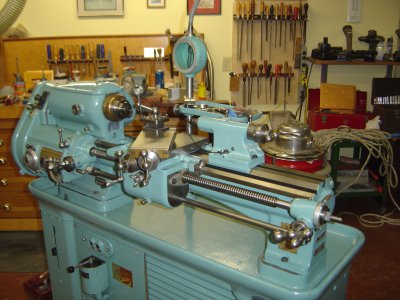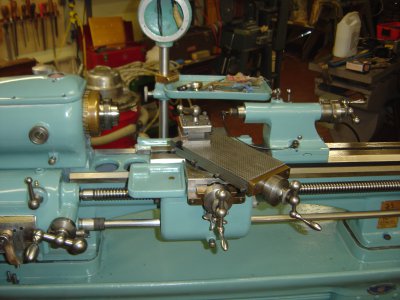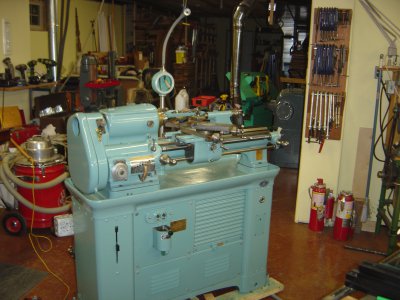Hello MICHAELHi aRM,
Thanks for the compliments on my Cromwell, but I'm not sure that my opinions are worth esteeming,
Re the jewelling I used a wood dowel and lapping compound because it was all I had. Craftex sticks aren't and item I can go to town and buy, and besides it was New Years day and everything was closed. I read up on it on some excellent sites (saw some stunning work) and determined that you can spin almost any round material that can bring abrasive against the work, in order to make a pattern.
Yes, I have restored other machines, but calling it restoration is a bit of a leap. Essentially the machines that I have "restored" were all basically sound machines with little wear but looked a little or a lot rough and needed paint and polish - maybe bearings or a part or two here and there. Sometimes more than 1 or 2 as my Cromwell needs several change gears, an indexing plate and an approx. 4" dial with 250 graduations on it.
As far as a complete lathe rebuild with grinding and scraping the ways and everything that goes with that. I have never done it - but I admire those skilled craftsmen and learners that have, and enjoy following their progress.
As far as your Chipmaster goes I remember your posts but can't recall a picture of it. As for as restoring it goes paint obviously doesn't make it work any better - but it sure looks nice. There are lots of people doing accurate work on machines with not much paint remaining. The reason I used a brush was that I wanted a specific colour +-, don't have a spray booth and it is way too cold outside. Otherwise I might have been able to match it up with automotive spray cans.
It depends what you want your Chipmaster to do for you. It is not unusual to bring home a new and unfamiliar machine and be a little or a lot overwhelmed - what have I gotten myself into? As a smart manager once taught me don't look at the whole problem - break it down into sections. I first used that thinking to do a wood carving project that I never thought that I could do. I thought to myself that I can do that area, and after that I think that I can learn to do the next area and so on - until the project was done.
Any big job is just a series of interconnecting smaller jobs. To clean it up and get it running you probably don't really have to Know all that much, but you have to be able to learn as you go. Digital cameras a a big help in record keeping. Don't take the whole machine apart and end up with a pile of whachyumacallits. Start with the tailstock, take it apart, clean it, and while it is apart you might as well paint it. Then do the compound rest - it has only a few parts so shouldn't be too difficult.
After that I would probably change the lube in the headstock and gearbox (lots of advise on this forum re the correct lube), oil every oil hole you can find, ensure that the gear selectors are fully engaged, make sure that it sounds smooth when you give it a spin using the belt and power it up a low speed.
Hope this helps,
Michael
Much appreciate the time U took and spent to respond.
Necessity is indeed the mother of invention - and Your lovely JEWELLING just goes to prove that !!
U have also given us stacks to think over with some ingenious and practical methods to go about resolving our quandary.
Guess we have to now seriously decide what we really want to do, make up our minds for certain and then be determined come hell or high water, that we will want to get this machine right and in perfect working condition.
Once again a gracious THANK YOU and
LORD BLESS
aRM




